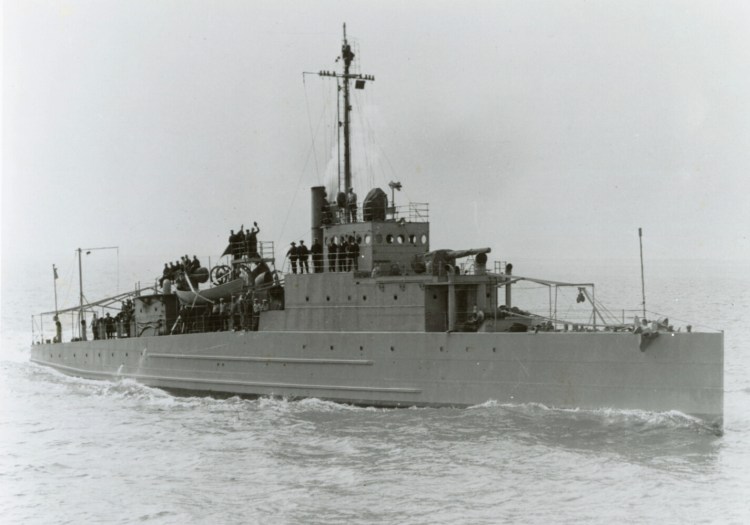April 23, 1945: Two weeks before the German surrender in World War II, the USS Eagle PE-56, a Navy patrol vessel taking part in a bomber training exercise 5 miles off the coast of Cape Elizabeth, explodes and sinks.

The incident kills 54 of the Eagle’s 67 crew members. A passing Navy vessel picks up the 13 survivors and takes them to shore.
American authorities initially attribute the sinking to an accidental boiler explosion. After re-examining historical evidence, however, the Navy concluded in 2001 that German submarine U-853 fired torpedoes at the Eagle and sank it. The revision is based on research by local lawyer and naval historian Paul Lawton.
The wreck site remained undetected until June 2018, when civilian divers found relics from the wreck. They made 15 to 20 dives while preparing a documentary film about the ship, “The Hunt for Eagle 56,” for the Smithsonian Channel.
A 2019 News Center Maine report about the divers’ work can be seen online at youtube.com/watch?v=Nt6vMm9jf04.
According to a plaque placed on shore near the wreck site, the sinking constituted the war’s greatest loss of Navy personnel in New England waters.
Relatives of the Eagle’s officers and crew planned to help dedicate a memorial monument this year at Fort Williams Park in Cape Elizabeth to mark the 75th anniversary of the sinking. That ceremony has been postponed because of the coronavirus crisis.
Joseph Owen is a retired copy desk chief of the Morning Sentinel and Kennebec Journal and board member of the Kennebec Historical Society. He can be contacted at: jowen@mainetoday.com.
Send questions/comments to the editors.


